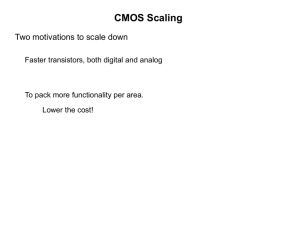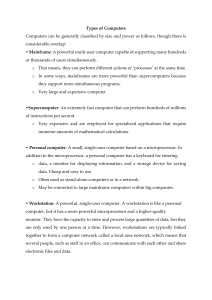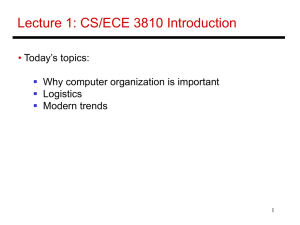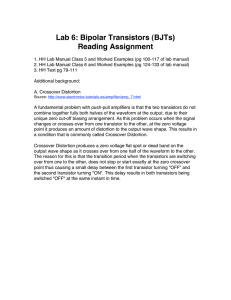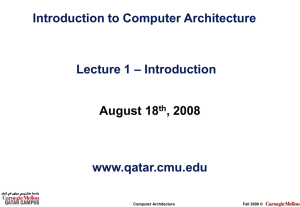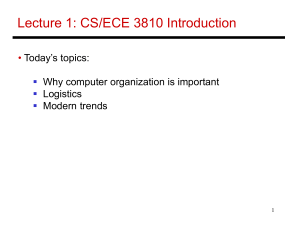Homework #1 - ECE Users Pages
advertisement
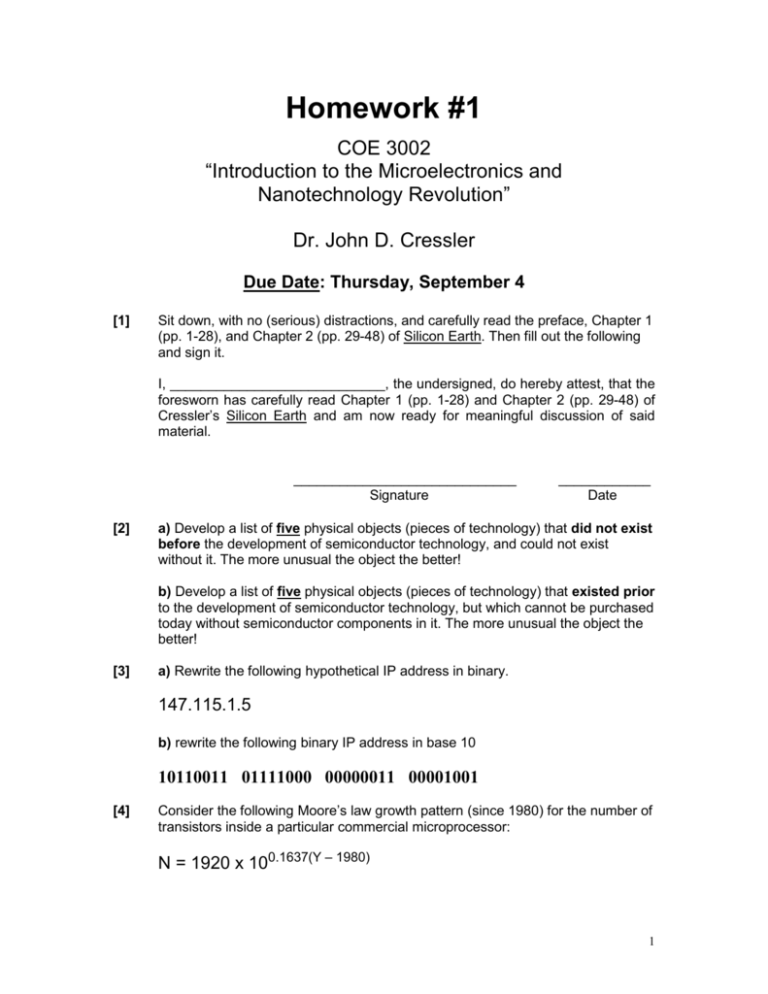
Homework #1 COE 3002 “Introduction to the Microelectronics and Nanotechnology Revolution” Dr. John D. Cressler Due Date: Thursday, September 4 [1] Sit down, with no (serious) distractions, and carefully read the preface, Chapter 1 (pp. 1-28), and Chapter 2 (pp. 29-48) of Silicon Earth. Then fill out the following and sign it. I, ____________________________, the undersigned, do hereby attest, that the foresworn has carefully read Chapter 1 (pp. 1-28) and Chapter 2 (pp. 29-48) of Cressler’s Silicon Earth and am now ready for meaningful discussion of said material. _____________________________ Signature [2] ____________ Date a) Develop a list of five physical objects (pieces of technology) that did not exist before the development of semiconductor technology, and could not exist without it. The more unusual the object the better! b) Develop a list of five physical objects (pieces of technology) that existed prior to the development of semiconductor technology, but which cannot be purchased today without semiconductor components in it. The more unusual the object the better! [3] a) Rewrite the following hypothetical IP address in binary. 147.115.1.5 b) rewrite the following binary IP address in base 10 10110011 01111000 00000011 00001001 [4] Consider the following Moore’s law growth pattern (since 1980) for the number of transistors inside a particular commercial microprocessor: N = 1920 x 100.1637(Y – 1980) 1 where Y is the year and N is the number of transistors. Assuming sustained Moore’s law growth, what will be the number of transistors in a microprocessor in the year 2025? You must show your work. [5] Using the equation from [4], how many years will it take for the transistor count in a microprocessor to increase by 100x. You must show your work. [6] a) Using the data from Overhead 1G, construct a Moore’s law mathematical expression for the average transistor cost (in cents) as a function of year. You must show your work. b) Using this expression, estimate the cost of a transistor in 2025. You must show your work. [7] Assume that the filament of a tiny vacuum tube amplifier burns about 3.5 W of electrical power. Let’s assume that no transistors exist, and that 100 million of these tubes can instead be used to build the equivalent of a 256 Mb memory. You must show your work. a) How much power will the tube-based memory burn (in Watts)? b) Assuming it is powered from a 110 V source, how much current will it draw (in Amps)? c) Assuming we want to run this tube-memory for 24 hours, what would the power bill be? (you may assume present Georgia Power residential rates (in $/kW-hour)) [8] The current world switching speed record for a logic gate inside a microprocessor is 2.5 picoseconds (2.5x10-12) for switching from a logical high (“1") to a logical low (“0"). How far would light travel (in vacuum) during the same elapsed switching time (in mm)? You must show your work. 2


